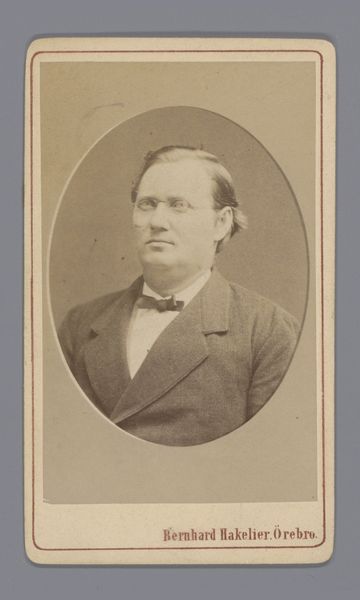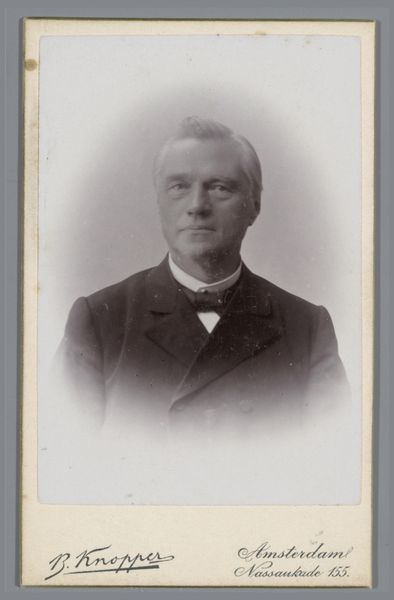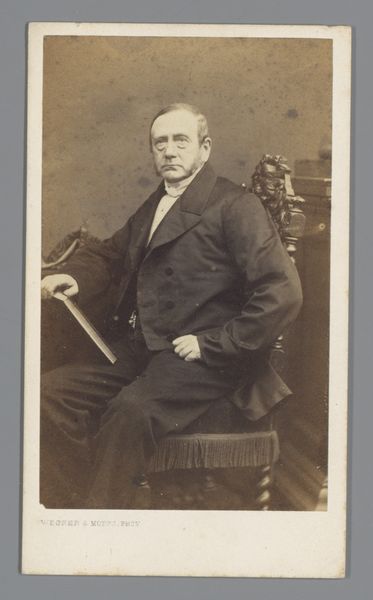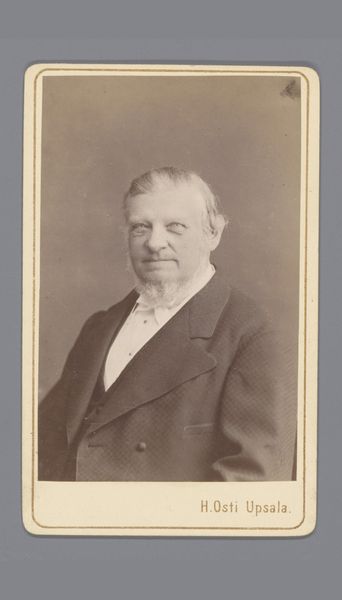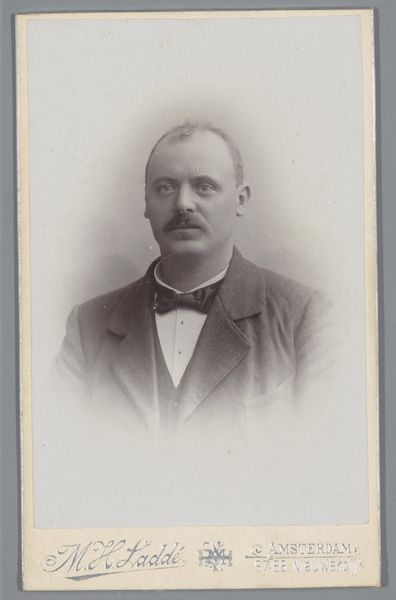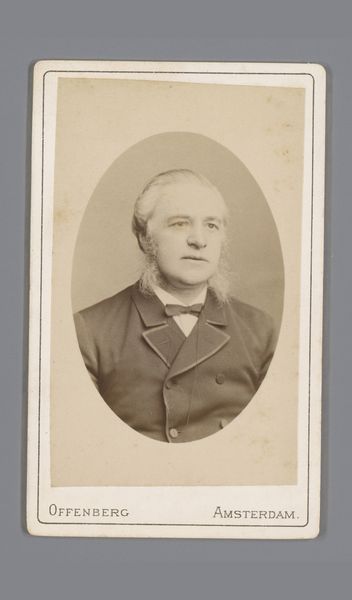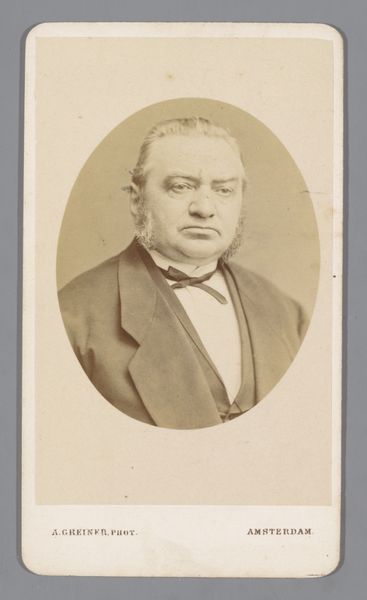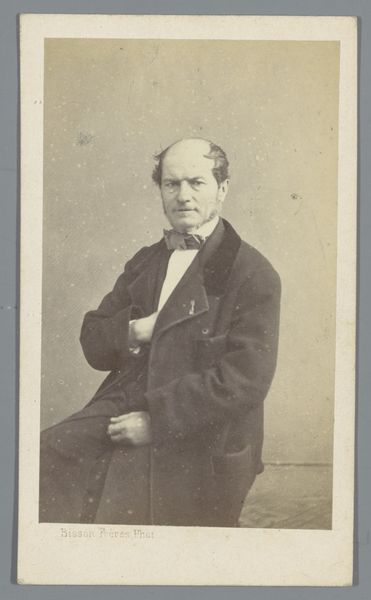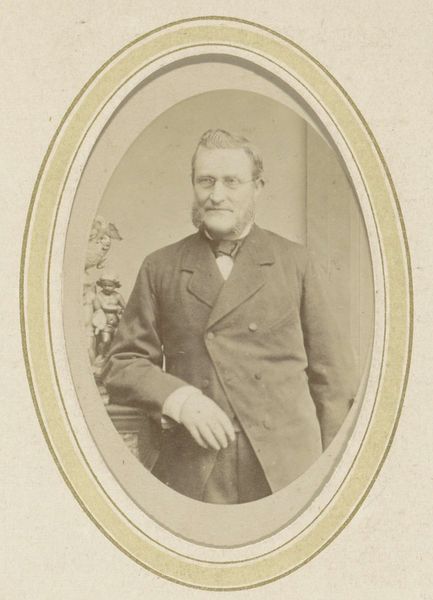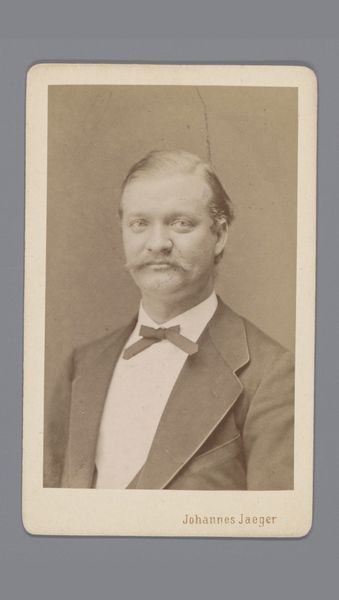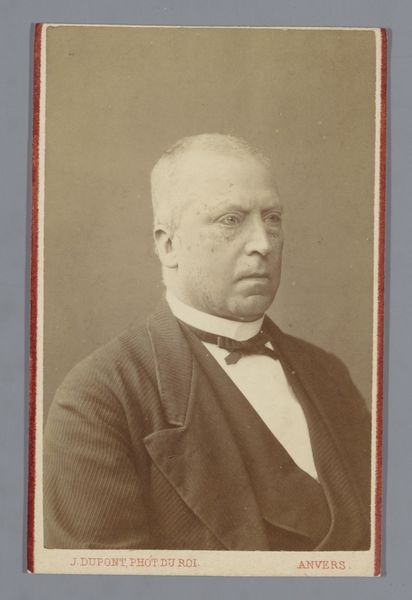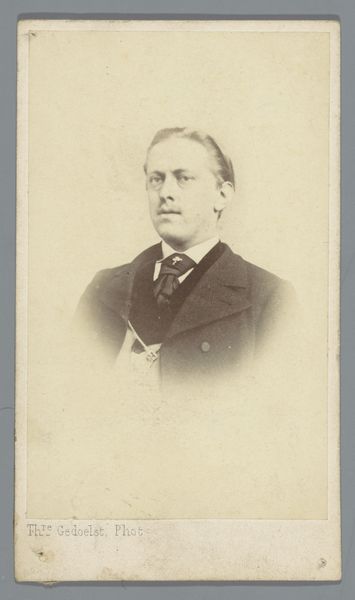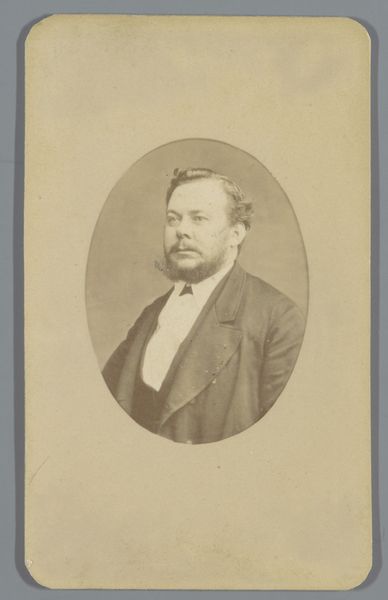
Dimensions: height 104 mm, width 63 mm
Copyright: Rijks Museum: Open Domain
Curator: Let’s take a look at this striking gelatin silver print from between 1878 and 1890. It is titled "Portret van een onbekende man, aangeduid als Lektor Carlson," made by Bernhard Hakelier. Editor: It’s captivating, actually. The tonal range is remarkably subtle, and the pose is so classic; very self-assured and posed, you know? Curator: Yes, it's a quintessential example of late 19th-century portraiture. Photography at this time served to solidify social standing and document identity, especially for the burgeoning middle class who gained easier access. These cartes de visite like this, would have been collected and exchanged like calling cards. Editor: It really is interesting, because, as you note, there is a specific formality to the pose—yet the texture achieves a level of naturalism and detail through the way light is interacting with his jacket. It’s really palpable and real. I’d even say the composition seems carefully structured, even down to the arrangement of shadows adding depth. Curator: Certainly, while photography aimed for objective realism, it was still carefully mediated. The sitter’s attire speaks to economic status and aspiration. It portrays the subject, potentially Lektor Carlson, as respectable and distinguished—very important for professional image in this era. And Hakelier operated his studio in Örebro, Sweden so it speaks to the rise of photography throughout Europe at the time. Editor: It’s clear that photography was embraced. The level of clarity this gelatin silver print can provide—almost painterly, almost—gives you an enhanced perception of texture, even mood. Is that romanticism that’s peaking through? The medium allows for realism, but not entirely documentary, right? Curator: You hit the nail on the head; portraiture aimed to both represent reality and project an idealised image. As photography moved out of painting’s shadow, these things grew into a popular artistic avenue that transformed the public's perception of identity. Editor: Well, thanks to Hakelier, we’re still seeing this Lektor’s composed public presentation 130 years later. It's compelling how artistic conventions of that era intersect so intimately in his portrait. Curator: Indeed. It allows us to have a clear depiction of how the late 19th-century viewed image and status.
Comments
No comments
Be the first to comment and join the conversation on the ultimate creative platform.
